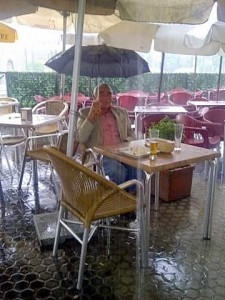This week we have another guest post by blogger, teacher, tour guide and history buff,
Peter Tatford, former Londoner and long-term Seville resident, aka Seville Concierge

Unless you’re interested in architecture you may not even have heard of him, but if you’ve been to Seville you’ll certainly have seen quite a lot of his work. If you have heard of him it’s most likely in connection with the iconic Plaza de España, built for the Spanish-American exhibition of 1929, and one of Seville’s top must-sees for any visitor.
But there’s more to González (Aníbal González Álvarez-Ossario, to give him his rather impressive full name) than just the Plaza de España. He was one of the few who accomplished the architect’s dream of not only designing great buildings, but of leaving his mark on an entire city.
He was born in modest circumstances in 1876, the eldest of three children, and developed an early interest in books. It was a struggle for his parents to pay for his schooling, but in 1902 the sacrifices bore fruit, and he qualified as an architect. In 1910 he was appointed director of works for the proposed Spanish American exhibition, a post he held until 1927, when he resigned because of disagreements with the new Royal Commissioner for the exhibition, José Cruz Conde. In 1920 he was the target of an attempted assassination, and from then until his death in May 1929 he was always accompanied by a bodyguard. The exhibition opened just a few days before he died.
Although his early work was in a modernist style, as Director of the exhibition he developed what would become known as Neomudejar, utilising many aspects of the classic Mudejar architecture of the 13th to 15th centuries, particularly the use of brick, tiles and horseshoe arches, but combining these with elements of Gothic and Baroque, as well as his own personal touches.
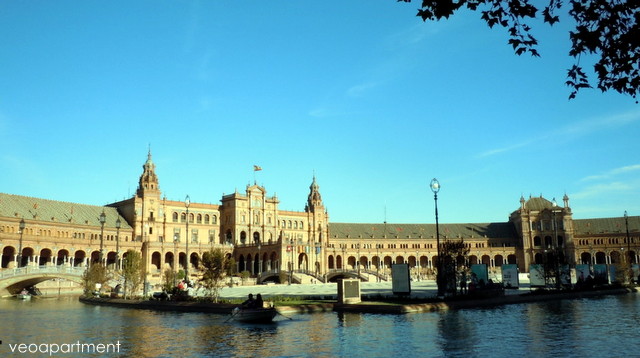
The Plaza España in Maria Luisa Park, the semicircular centrepiece of the exhibition with its representations of all the Spanish provinces, boating lake, fountains and towers, is undoubtedly his crowning achievement (a statue of him erected two years ago stands outside the entrance to the Plaza), but he was also responsible for the Plaza America, including the buildings that now house the Archaeological Museum and the Museum of Popular arts and Customs, and the Royal Pavilion.
Away from the exhibition some of his best known works include several buildings on the west side of the Avenida de la Constitución, especially the house of the Marques de Villamarta on the corner of Garcia de la Vinuesa (it’s the one with the narrow circular turret), the Bankinter building in the Campana, the Capilla del Carmen at the end of Triana Bridge, and the house with the big glassed-in balcony on the corner of the Plaza de los Refinadores (which I always tell visitors is where I want to live).
He was Seville’s most prolific architect in the first third of the 20th century, and his work also inspired a number of others who followed in his footsteps, and helped create an important part of the appearance of the city today.
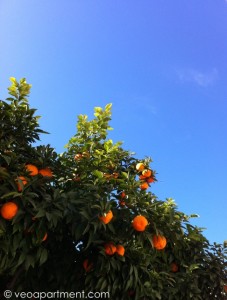

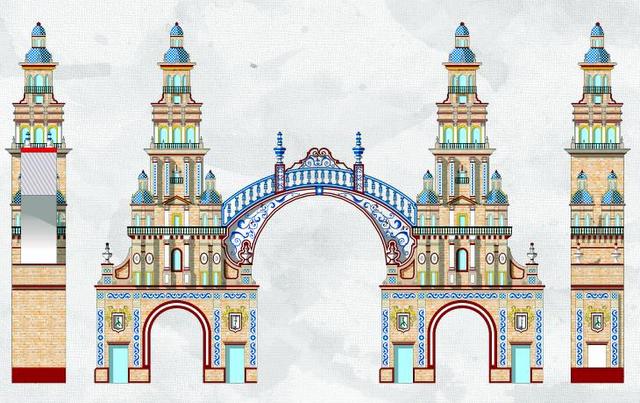
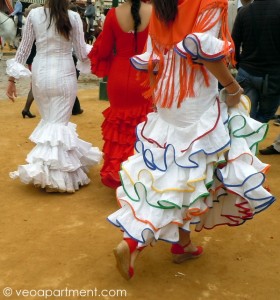 The first April Fair was held in 1847 on the Prado (field) de San Sebastian, just outside the old city walls, which at that time were still standing, and it was initially a cattle and horse fair intended as a modern version of the old mediaeval fairs. Strangely for what has become such a Sevillano event, it was the brainchild of a Catalan, Narciso Bonaplata, and the Basque José María Ybarra. As the years passed the Fair gradually began to acquire the character it has today. The horses and carriages have remained a staple of the fair, at least during the day, as have the traditional traje corto (short jacket and tight trousers) of the men and colourful flamenco dresses of the women, but the cattle are long gone. The first electric lights appeared in 1874, followed shortly by the paper globes that are so typical today, and the first commercial casetas. In 1973 the Feria moved to its present home.
The first April Fair was held in 1847 on the Prado (field) de San Sebastian, just outside the old city walls, which at that time were still standing, and it was initially a cattle and horse fair intended as a modern version of the old mediaeval fairs. Strangely for what has become such a Sevillano event, it was the brainchild of a Catalan, Narciso Bonaplata, and the Basque José María Ybarra. As the years passed the Fair gradually began to acquire the character it has today. The horses and carriages have remained a staple of the fair, at least during the day, as have the traditional traje corto (short jacket and tight trousers) of the men and colourful flamenco dresses of the women, but the cattle are long gone. The first electric lights appeared in 1874, followed shortly by the paper globes that are so typical today, and the first commercial casetas. In 1973 the Feria moved to its present home. During the day it’s the horses and carriages that take the attention, along with their riders, everything and everyone done up to the nines to parade around the fairground, and for anyone with a love of horses this alone is enough to make Feria worth a visit. At night, however, Feria is quite a different experience. The lights are all switched on, and the party begins. In the casetas there is much drinking of rebujitos (sherry with 7-up) and dancing of Sevillanas (a folk dance with flamenco-style music), that often carries on until dawn. Next to the main fairground, in the Calle del Infierno (Hell Street) is a funfair, with all the traditional rides and typical fast-food stalls.
During the day it’s the horses and carriages that take the attention, along with their riders, everything and everyone done up to the nines to parade around the fairground, and for anyone with a love of horses this alone is enough to make Feria worth a visit. At night, however, Feria is quite a different experience. The lights are all switched on, and the party begins. In the casetas there is much drinking of rebujitos (sherry with 7-up) and dancing of Sevillanas (a folk dance with flamenco-style music), that often carries on until dawn. Next to the main fairground, in the Calle del Infierno (Hell Street) is a funfair, with all the traditional rides and typical fast-food stalls.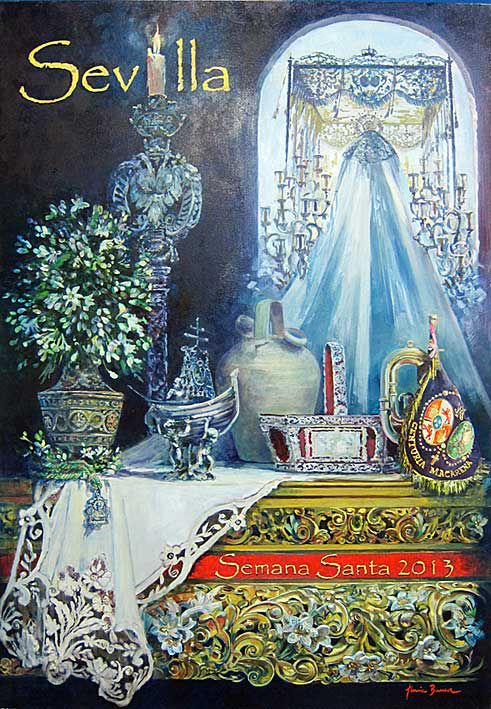


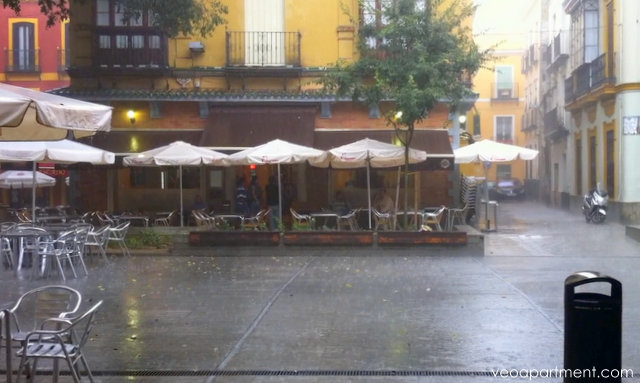 Plaza de la Alfalfa
Plaza de la Alfalfa